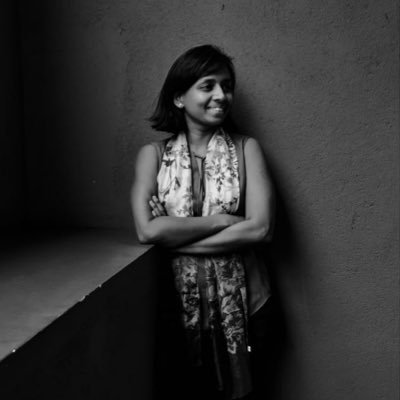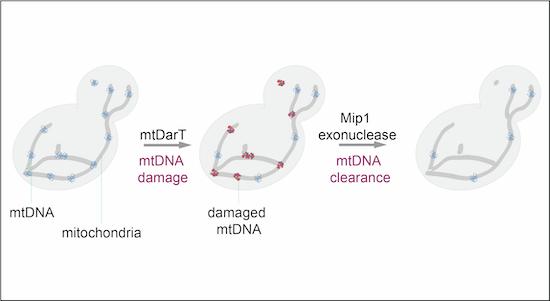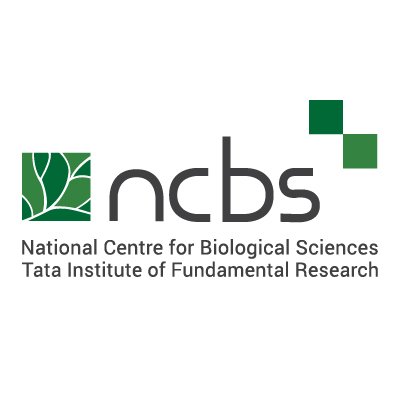
Anjana Badrinarayanan
@anjbadri
Followers
1K
Following
3K
Media
14
Statuses
349
Now published @CurrentBiology. Happy to share latest work from the lab led by @ashamjos and @Adhikashreni1, describing replisome speed variation in Caulobacter!.
10
14
126
RT @MartinJLercher: 🚨 Just out in Science: 2/3 of bacterial gene families have a preferred position on the chromosome—and natural selection….
0
57
0
RT @shivaprasad_pv: Delighted to share this. A novel H4 variant that modulates chromatin to mediate salt stress response. This mammoth work….
0
29
0
RT @Banerjeeiitb: 🚨“Ripping bacteria to shreds” 🚨 VCP/p97, a cellular AAA-ATPase, targets and then using its tweezer like action rips apart….
0
26
0
RT @osman_lab: 🚀 Excited to share our latest work on Mrx6 and mtDNA copy number regulation, now available on @biorxivpreprint ! We uncover….
0
15
0
RT @EWB_Lab: In our study in @ScienceAdvances, we reveal how ssDNA binding activates transcription factor PafBC, triggering the DNA damage….
0
21
0
When does a DNA polymerase degrade DNA? Read Akshaya’s latest work from the lab to find out more!.
Akshaya Seshadri and Anjana Badrinarayanan @anjbadri @NCBS_Bangalore @TIFRScience show that #exonuclease action of replicative #polymerase gamma drives damage-induced #mitochondria #DNA clearance. A new mechanism of mtDNA clearance following damage.
2
12
99
RT @bioSavinov: Happy to announce that our paper on systematically discovering peptides to inhibit protein-protein interactions in living c….
0
11
0
Fun work on the regulation of the bacterial SOS response to DNA damage. Led by the fantastic @Aditya_Kamat96!.
There's more to SOS response timing than the LexA repressor. In our preprint from the Anjana Badrinarayanan @anjbadri Lab, we uncover a new regulatory layer that imparts temporal structure to the bacterial SOS response.
0
4
48
RT @WallaceUcsf: Mitochondria consist of networks of cylindrical tubes, right? Not necessarily! - in our new preprint, @gavsturm.bsky.socia….
0
12
0
RT @SulianaManley: This was an amazing collaboration, we had the luxury of years of great conversations with @WallaceUcsf and his team, as….
0
1
0
RT @RamamurthiLab: @felixrl_ took on a ~50-yr-old mystery in #Staph aureus cell biology and came out on top! Check out his paper on how #St….
0
29
0
RT @biorxiv_micrbio: Conflicts between the DNA replication and repair machineries promote cell death in Gram-positive bacteria https://t.c….
0
3
0
RT @Ch_Winterhalter: If you haven't already, check out the Hachiman phage defence system characterised by the @doudna_lab @CellCellPress. I….
0
2
0
Excited to be featured in a childhood favourite @TinkleMagazine! Thanks to @NCBS_Bangalore communications team for this super fun initiative.
🌟 NEW! 🌟.Our latest comic with @TinkleMagazine featuring Dr Anjana Badrinarayan is out now!. Check out the comic and do let us know your thoughts in the comments below! . #sciencecomics #womeninscience #womeninSTEM
6
17
140
RT @biorxiv_molbio: Mechanism of DNA entrapment by the MukBEF SMC complex and its inhibition by a viral DNA mimic .
0
5
0
RT @osman_lab: Huge thanks to @anjbadri and @nitish_dua3 for spotlighting our work in @embojournal ! 🙏🧬 Check out the full article here….
0
12
0
RT @aurelepiazza: How do you find a needle in a genomic haystack? Yeast yields some answers here, thanks to Xless Agnès Dumont, Nicolas Men….
0
15
0
Super work from @ashamjos, @Adhikashreni1 et al on replisome speed variation in Caulobacter!.
Delighted to share this new preprint from Anjana Badrinarayanan @anjbadri lab. By assessing replication dynamics at the level of single cells, we reveal the intricate relationship between nutrient status and rates of genome duplication in bacteria.
1
1
22








